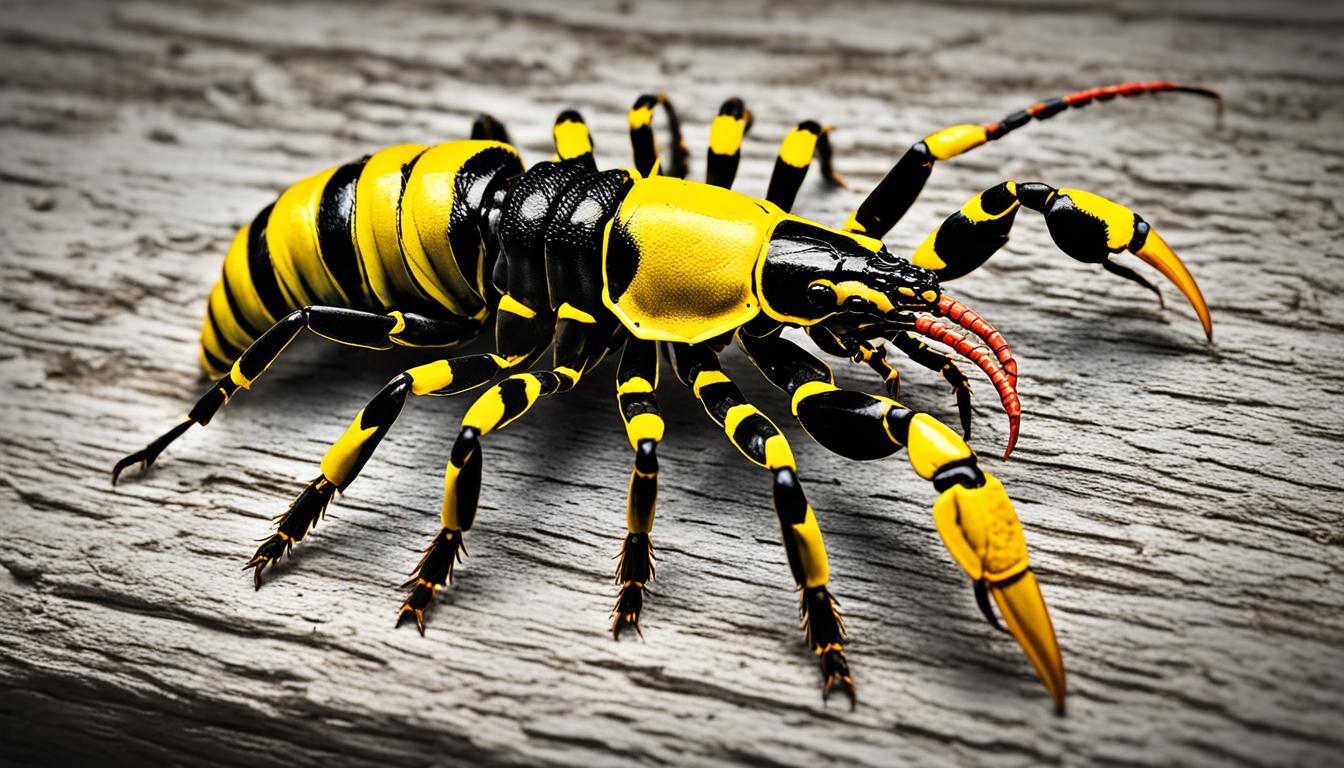Did you know the northernmost scorpion lives in Europe? It’s the European yellow-tailed scorpion, or Tetratrichobothrius flavicaudis. This scorpion is small and looks black with yellow-brown legs and tail. It belongs to the Euscorpiidae family. In the United Kingdom, it has a big group that can have up to 15,000 members. But in the Mediterranean, there are more kinds of scorpions. Some include Buthus occitanus, Buthus ibericus, Buthus paris, Buthus montanus, and Androctonus mauritanicus. This shows the variety of scorpions in this area.
European Yellow-Tailed Scorpion Species Names
The term “Yellow-Tailed Scorpion” typically refers to a single species found in Europe:
Euscorpius flavicaudis
This species is also known as the European yellow-tailed scorpion or black scorpion. It’s native to southwestern Europe but has been introduced to some parts of southern England.
There are other Euscorpius species in Europe, but they aren’t specifically referred to as “yellow-tailed.” The genus Euscorpius includes several species found across Europe, North Africa, and parts of Asia. Some examples include:
- Euscorpius italicus
- Euscorpius carpathicus
- Euscorpius germanus
- Euscorpius tergestinus
- Euscorpius alpha
However, these are not all “yellow-tailed” species. The term “yellow-tailed” specifically refers to E. flavicaudis.
Introduction to European Yellow-Tailed Scorpions
The European yellow-tailed scorpion is also known as Tetratrichobothrius flavicaudis. This small arachnid is in the Scorpiones order and Euscorpiidae family. It’s from Southern Europe and Northwest Africa. But, there’s also a group in the United Kingdom now.
Scientific Classification and Nomenclature
The Euscorpius genus is where the European yellow-tailed scorpion comes from. This genus has many small scorpions in Europe. It was first in the Euscorpius genus but now in Tetratrichobothrius. This change helps scientists better understand scorpion families.
Physical Characteristics and Appearance
This scorpion is small and black with yellow-brown legs and tail. Grown-ups are usually 35-45 mm, around 1.4-1.8 inches long. They have big, powerful claws and a short, thin tail for digging.
Tetratrichobothrius flavicaudis can live in many places, even cooler ones like the UK. Its ability to handle different temperatures helps it do well in new locations.
Geographic Distribution of Scorpions in Europe
Besides the European yellow-tailed scorpion (Tetratrichobothrius flavicaudis), many others are in the Mediterranean. For example, Buthus occitanus, Buthus ibericus, Buthus paris, Buthus montanus, and Androctonus mauritanicus. They look alike, but their colors can vary from yellow to brown.
Buthus occitanus is also called the Occitan yellow scorpion. It’s found a lot in southwest Europe and is about 60-80 mm long. You can also find Buthus ibericus, Buthus kunti, and even the Mesobuthus cyprius which lives only in Cyprus.
Mesobuthus gibbosus is seen in several Balkan countries like Albania, Bulgaria, and Greece. But, a new kind, Mesobuthus gallianoi, was found in Crete in 2018.
The main scorpion we’re talking about is the European yellow-tailed scorpion, Tetratrichobothrius flavicaudis. It’s 35-45 mm long. This kind is known for the yellow-and-black stripe on its tail. Some now live in the UK too, near Sheerness Dockyard on the Isle of Sheppey, and parts of London.
Scientists look into these scorpions and others in the region. They’re trying to protect and understand them because they’re important for nature.
Distribution and Habitats
The European yellow-tailed scorpion, Tetratrichobothrius flavicaudis, lives in Northwest Africa and Southern Europe naturally. Yet, it came to the UK by accident. Now, up to 15,000 live in Sheerness Dockyard on the Isle of Sheppey, Kent. This makes them the northernmost scorpion group outside the Americas.
Native and Introduced Ranges
Tetratrichobothrius flavicaudis mostly lives in Europe, under 500 meters high. It’s found as far north as Krems in Austria and as far south as North Africa. They mostly live in places like southern France, northern Italy, and the UK. The biggest group is in Sheerness, Kent.
Preferred Habitats and Environments
The scorpion likes warm, temperate areas and survives in cities and the wild. In the UK, they hide in walls where the mortar is old. They stay in quiet places, from urban areas to the countryside, up to 500 meters above sea level.
| Characteristic | Value |
|---|---|
| Mass | 0.3 to 1.1 grams, with an average of 0.70 grams |
| Length | 35 to 40 millimeters |
| Gestation Period | Approximately 10 months |
| Activity Patterns | Nocturnal and crepuscular (active at dawn and dusk) |
| Feeding Habits | Ambush predator, primarily feeding on woodlice and small insects |
| Behavior | Cannibalism may occur within colonies |
| Economic Importance | No known economic importance to humans |
| Conservation Status | Not listed on the IUCN Red List, US Federal List, or CITES |
Conclusion
The European yellow-tailed scorpion is a special kind of scorpion. It’s known as the Euscorpius flavicaudis. It tells us a lot about scorpions in the Mediterranean. This scorpion is known for its yellow-brown look. It’s the most northern scorpion outside the Americas. This shows us how well scorpions can live in different places.
We learned a lot about the European yellow-tailed scorpion. We talked about its group name, what it looks like, and where it lives. This has helped us understand more about it and the world around it. Seeing it in the UK shows how species can move and change.
Studying the European yellow-tailed scorpion helps us learn about scorpions. We learn about their past, what they do in nature, and how they fit in their homes. This study shows us the many wonderful forms of life on Earth. It also reminds us to protect these interesting creatures for the future.

